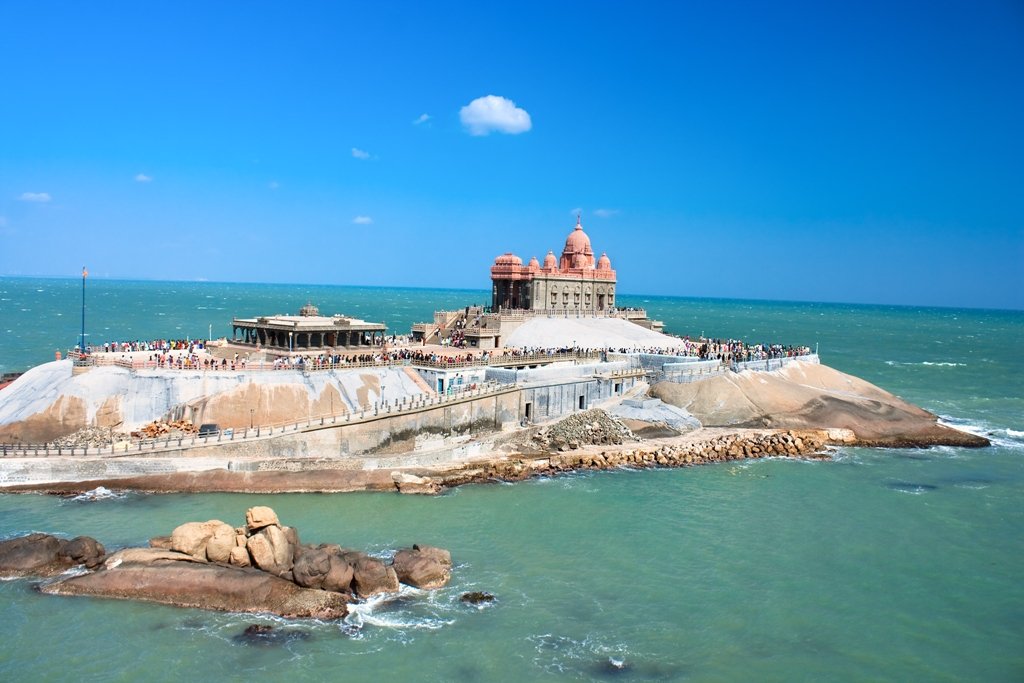Also known as Cape Comorin, Kanyakumari is not only the southernmost tip of the Indian subcontinent but the much venerated confluence of the Arabian Sea, the Bay of Bengal, and the Indian Ocean.
The city of Kanyakumari, with its southern coast to the vast and the powerful Indian Ocean, impressed the British so much that they decided to rename it Cape Comorin to accentuate its beauty. Kanyakumari enchants visitors with its spectacular views, especially at sunrise and sunset. The most breathtaking view occurs on Chaitra Purnima (the full moon night in April) when both sunset and moon rise occur at the same time.
Kanyakumari is believed to be the abode of Kumari, the Virgin Goddess, who is supposed to have done penance here so that she could marry Shiva. The marriage, however, did not take place since it was deemed that she remain a virgin in order to save the world. Her temple, the Kumari Amman Temple, is a popular pilgrimage centre on the seashore.
Watching the sun rise from the subcontinent’s southernmost point is an age-old ritual that attracts thousands of Indian pilgrims each morning. They plunge themselves into the turbulent swell, believing that the tri-oceanic waters are holy. Others revel in the glorious spectacle as though it were a major Bollywood premiere.
This important pilgrimage site is centred on worship of the Goddess Kumari, ‘the protector of India’s shores’. The new day is heralded in by the scent of jasmine garlands, the wail of temple music and the whoops and applause of excited children as the sun finally crawls its way over the sea.
Nature’s daily show here becomes something akin to a miniature festival, with excited pilgrims besieged by chai-, coffee-, and souvenir-wallas selling everything from kitschy crafts (conch shells with plastic flower bouquets glued to the top) to ancient postcards and outdated booklets. But it’s all part of the experience, which is quite wonderful.
Click on one of the sections on the right for more information about Kanyakumari.



Leave A Comment